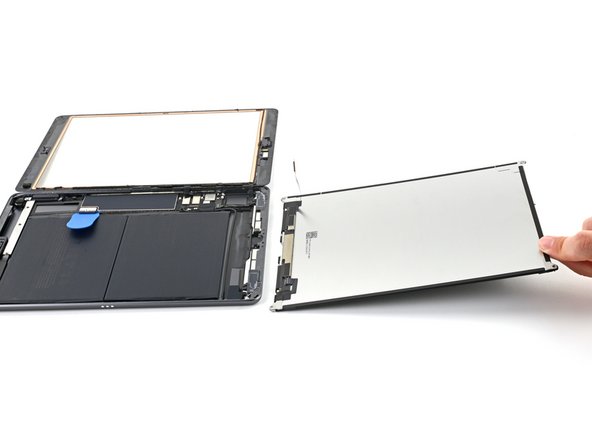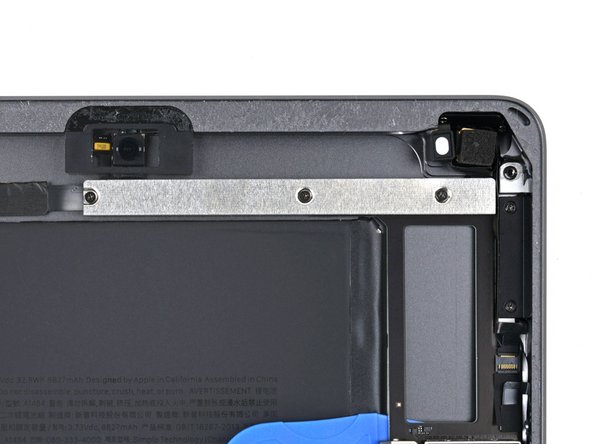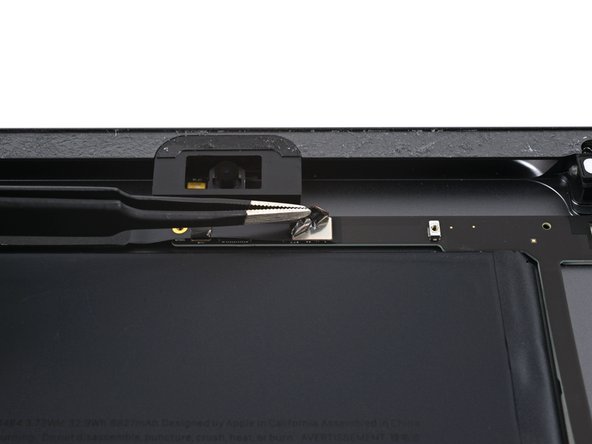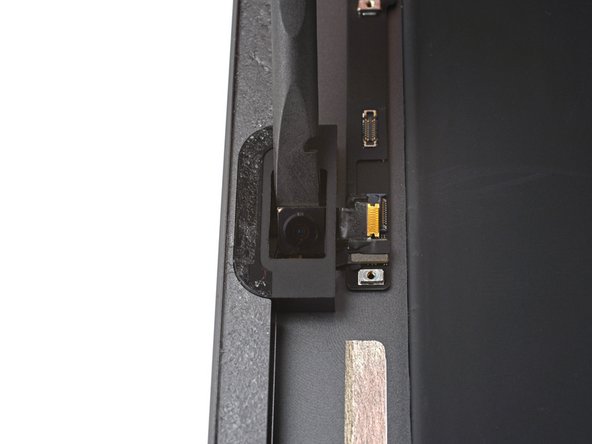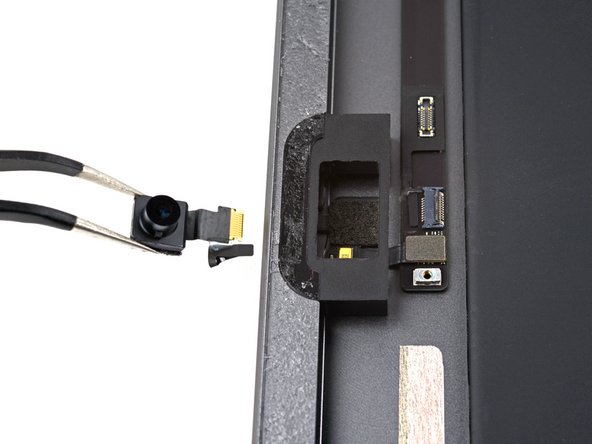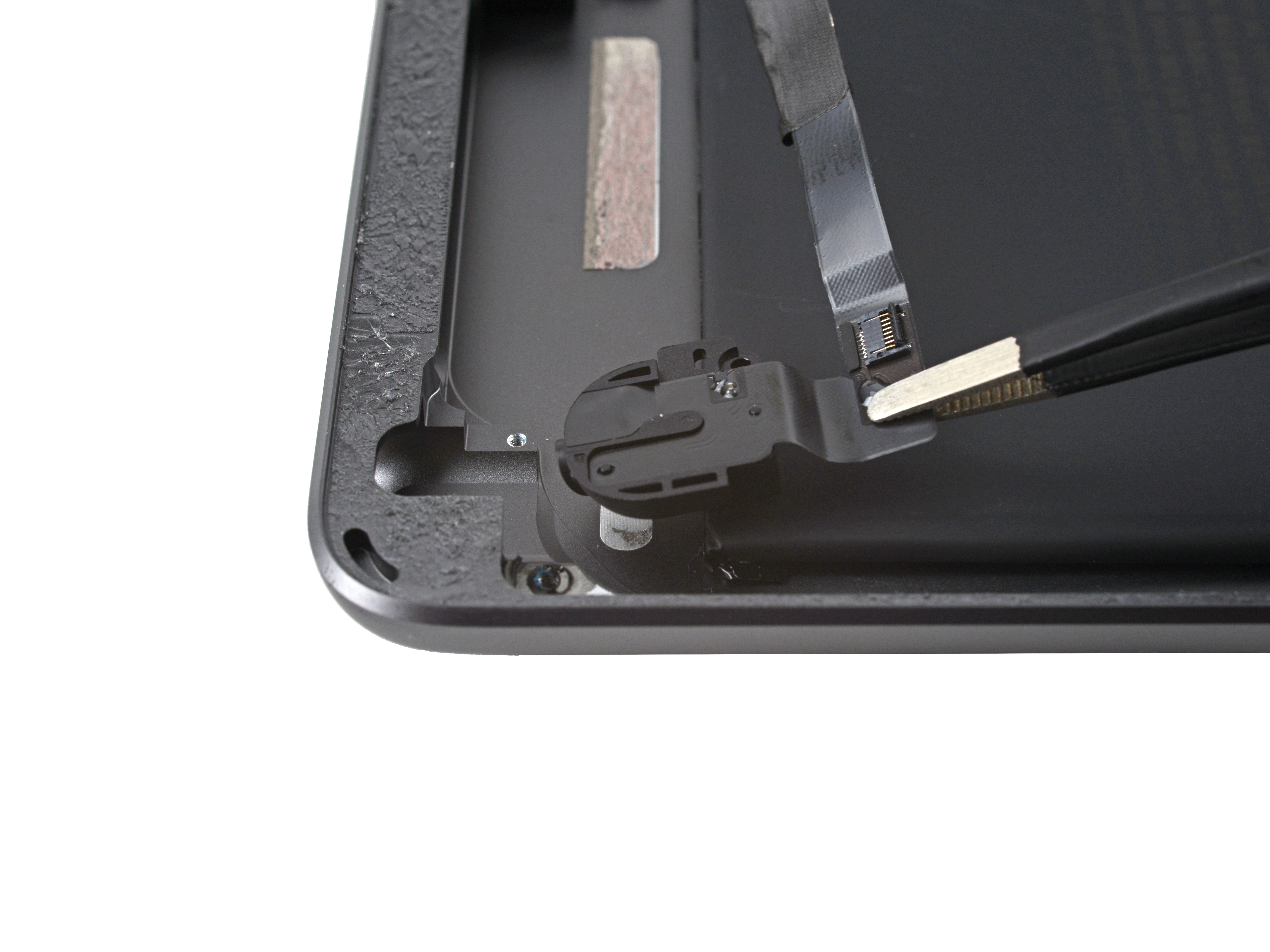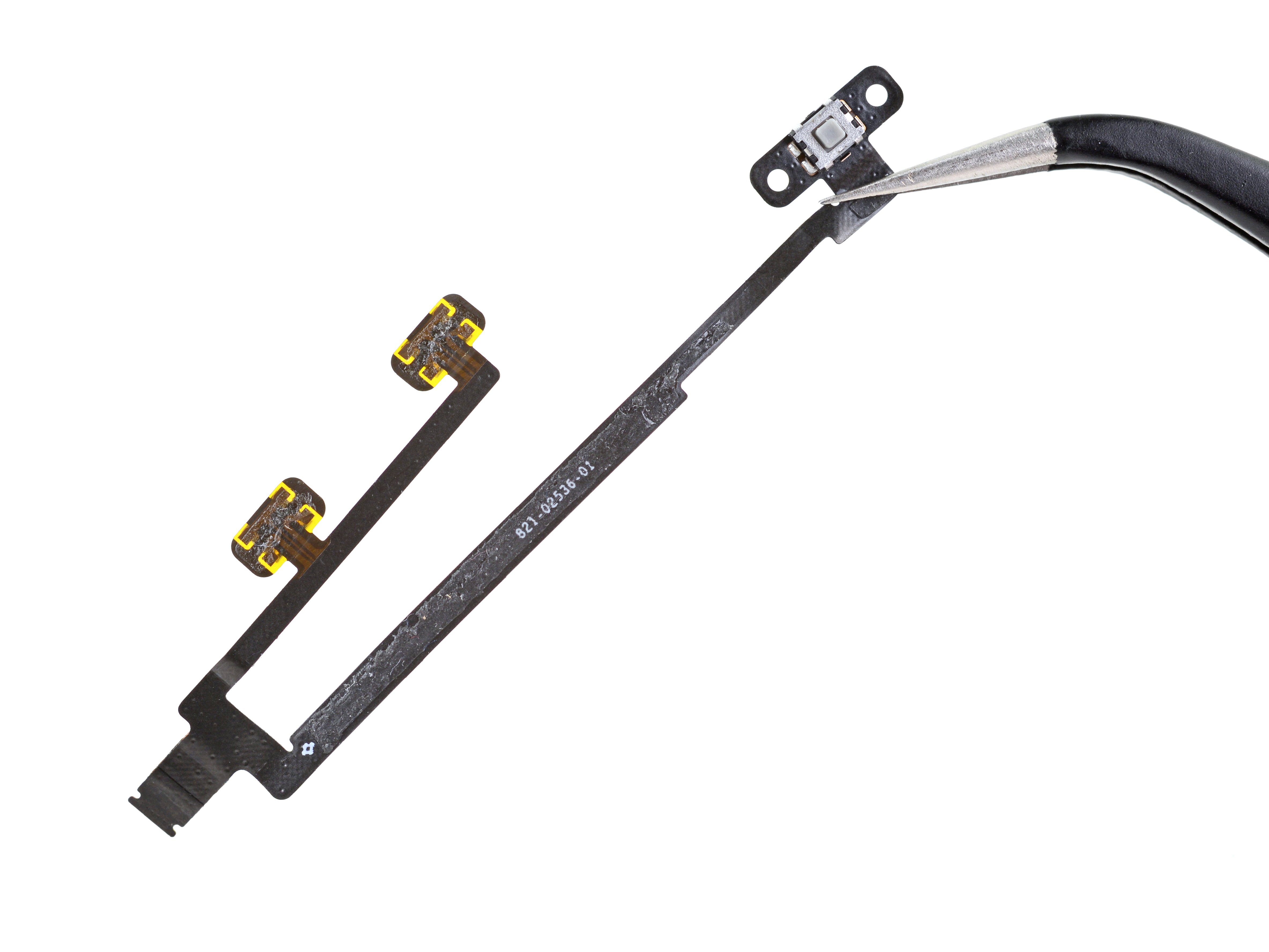iPad 9 Front Camera Replacement
Duration: 45 minutes
Steps: 54 Steps
Before you dive into your iPad's innards, make sure the battery is below 25%. It’ll keep you safe and avoid any surprises!
Follow this guide to swap out the front camera on your iPad 9 Wi-Fi model. Heads up: this is just for the Wi-Fi version—if you have the LTE one, check the specific guide linked here. Before you get started, drain your battery to under 25% to keep things safe and reduce fire risk if the battery gets nicked during the repair. Got a swollen battery? Take extra care! When disconnecting the battery with a battery blocker, be super gentle—the contacts are delicate and easy to wreck. If you skip isolating the battery, try to steer clear of metal tools unless you’re just loosening screws, to avoid short circuits and damage to the circuits. Some photos might be from a slightly different model and look a bit different, but that won’t mess with the steps. If you hit a tricky spot, remember you can always schedule a repair for professional help.
Step 1
Before you dive in, make sure to power off your iPad. It's always a good idea to give your device a little break before you start the repair journey.
- Warm up an iOpener and let it work its magic on the left edge of your iPad for two minutes.
Tools Used
Step 2
- As the adhesive starts to let go, keep an eye out for these tricky spots that don’t like being pried:
- Front camera
- Antennas
- Display cables
- Ambient light sensors
Step 3
The next three steps will introduce the Anti-Clamp, a nifty little tool we created to make opening your device a breeze. If you're not using the Anti-Clamp, just skip ahead three steps for another way to do it.
Need a refresher on how to use the Anti-Clamp? Check out this guide for all the details.
If your iPad is being a little too slippery for the Anti-Clamp to grip, simply use some tape to give it a better hold.
- Pull the blue handle back to free the Anti-Clamp's arms and get them ready for action.
- Place something underneath your iPad to keep it level and stable between the suction cups.
- Set the suction cups along the left edge—one on the top, the other on the bottom—just like placing the perfect toppings on a pizza.
- Grip the bottom of the Anti-Clamp steady, and with a firm press, apply some suction to the top cup to get everything locked in place.
Step 4
- Slide the blue handle forward to lock those arms in place.
- Give the handle a full 360-degree clockwise spin, or keep turning until the suction cups start to stretch.
- Keep an eye on the suction cups to make sure they stay lined up. If they start to slip out of position, just loosen them a bit and realign the arms.
Step 5
Turn no more than half a twist at a time, then give it a minute to chill and let the Anti-Clamp do its magic.
Want the full scoop on how to wield a hair dryer like a pro? Dive into this guide.
If the Anti-Clamp isn’t opening enough space, just heat it up a bit more and twist the handle clockwise by half a turn.
- Take a breather for a minute to let the adhesive do its thing and create a little gap for you.
- Not feeling enough heat? No worries! A hair dryer can help warm up that left edge of your iPad.
- When the Anti-Clamp has made a nice enough gap, slide in an opening pick under the digitizer.
- Feel free to skip ahead to the next step!
Step 6
Here’s how to pop open your iPad using a trusty suction handle.
If your screen is shattered to smithereens, slap on a layer of clear packing tape to give that suction cup something to grab onto. No tape? No problem—strong tape works too. And if you’re feeling adventurous, a dab of superglue can help the suction cup stick to the cracked glass. Easy does it!
- When the screen feels warm to the touch, grab your trusty suction handle and stick it on the left edge of the screen, as close to the edge as you can get.
- Gently pull up on the screen using the suction handle to make a tiny gap between the digitizer and the frame.
- Slide an opening pick into the gap between the digitizer and the frame to keep things moving.
Tools Used
Step 7
No worries if the opening pick peeks through the digitizer—just slide it out. Your LCD screen should be safe, but be aware, that sticky adhesive might be a bit of a pain to clean up.
- Pop a second opening pick into the gap you just made.
- Gently slide that pick down to the bottom-left corner to loosen up the adhesive.
- Keep the pick wedged in there so the adhesive doesn’t sneak back together.
Step 8
- If your opening pick gets stuck in the adhesive, try 'rolling' it gently along the edge of the iPad to keep things moving and separate that sticky stuff.
Step 9
- Gently slide your opening pick into the top-left corner of the iPad to break the adhesive seal.
- Leave the pick in place at the top-left corner to stop the adhesive from sticking back together.
Step 10
- Warm up an iOpener and gently press it against the top edge of your iPad for two minutes. This will help loosen things up before you get into the real fun.
Tools Used
Step 11
- Gently twist the pick around the top-left corner of the iPad to loosen the adhesive.
Step 12
Be careful around the front camera! Sliding the pick too close might harm the lens. We'll walk you through how to avoid this little mishap.
- Gently slide the opening pick along the top edge of your iPad, but stop just shy of the front camera. Keep it steady and take it slow!
Step 13
- Gently pull the pick out so that just the tip stays wedged between the digitizer and the frame.
- Carefully slide the pick over the top of the front camera to loosen the adhesive.
- Keep the pick resting near the right side of the front camera before moving on to the next step.
Step 14
- Pop the pick back in and slide it up to the top-right corner of your iPad to fully break through that stubborn adhesive.
- Keep the pick wedged in the top-right corner so the adhesive doesn’t sneak back together on you.
Step 15
- Warm up your iOpener and gently press it onto the right edge of your iPad for about two minutes. Give it a little time to work its magic—patience is key!
Tools Used
Step 16
- Gently work the pick around the top-right corner of the iPad, making sure to loosen the adhesive without rushing.
Step 17
The display cables chill out about halfway up from the bottom of the iPad. Pause your slide when you hit roughly 3 inches from the bottom.
- Grab a new opening pick and gently slide it right into the middle of your iPad's right edge.
Step 18
- Warm up an iOpener and gently place it on the bottom edge of the iPad for a solid two minutes to loosen things up.
Tools Used
Step 19
Be careful not to swing the pick all the way around the corner, or you might accidentally mess up the antenna!
Peep the third pic to spot the bottom-left antenna chilling right under the digitizer.
- Gently slide the pick toward the bottom-left corner to loosen up that sticky adhesive.
- Keep the pick tucked in the corner while you get ready for the next step.
Step 20
Slide the pick gently toward the home button only—going the other way might mess up the antenna, and we don’t want that!
If you need to slide the pick over this section again, just pop it out and re-insert it starting from the bottom-left corner. Simple as that!
- Grab a fresh opening pick and slide it into the gap you made along the bottom edge of your iPad.
- Gently glide the pick over the antenna, but stop right before reaching the home button.
- Leave the pick to the left of the home button and continue on with the next steps.
Step 21
- Slide an opening pick into the gap you've just made—nice and easy!
- Now, gently glide the pick under the home button, angling towards the bottom-right corner. Just make sure the tip is snugly between the digitizer and the frame.
Step 22
Slide the pick gently only toward the home button—going the other way might mess with the antenna, and we don’t want that!
If you find yourself needing to slide the pick over this section again, simply remove it and re-insert it at the bottom-right corner.
- Take the pick and gently slide it toward the home button to separate that stubborn bottom adhesive completely.
- Once you've done that, leave the pick just to the right of the home button before moving on to the next step.
Step 23
- Warm up that iOpener and stick it on the right side of your iPad for a cozy two minutes.
Tools Used
Step 24
Take it slow and steady here. Make sure the adhesive is nice and warm so it’s easy to work with, and carefully separate all the adhesive with your pick. Don’t hesitate to pause and reheat if needed—patience pays off!
If you feel a stubborn hold, just warm up the edges again and gently slide your opening pick along them.
- Gently twist the two opening picks at the left corners of the iPad to nudge the digitizer up just a bit, loosening the last stubborn bits of adhesive holding it down.
Step 25
As you go through the next steps, try to avoid touching the back of the glass or the LCD screen with your fingers—those smudgy fingerprints can be a real pain to get rid of later.
- Gently lift the left side of the digitizer to loosen up the sticky stuff along the right edge of your iPad.
Step 26
Watch out for those two digitizer cables when using your opening pick—they're delicate little things!
- Keep the digitizer steady while you gently slide an opening pick between the two digitizer cables to free up the last bit of adhesive holding them together.
Step 27
- After carefully loosening all the adhesive, gently open the digitizer like a book and lay it flat next to the iPad.
- When putting everything back together, make sure to clean off any leftover adhesive from the frame—and the digitizer if you’re reusing it—using some isopropyl alcohol. Then swap in fresh adhesive strips or pre-cut adhesive cards to keep things secure.
- Keep an eye on those display cables while reassembling. Fold them neatly under the LCD screen to avoid any damage and keep your iPad happy.
Step 28
- Grab a Phillips screwdriver and unscrew those four 4.2 mm-long screws holding the LCD in place. Easy peasy!
- As you go through the steps, keep an eye on each screw—make sure to put it back exactly where it belongs so your iPad stays in top shape.
- Peel off any tape covering the LCD screws—it's like unwrapping a gift, but for your iPad!
Step 29
Take it easy with the LCD removal in this step—it's still hooked up to a few cables near the home button. No need to rush.
Gently lift the LCD from the front-facing camera side and leave the rest for later.
- Gently use the flat end of a spudger to pop the LCD out of its spot just enough so you can grab it with your fingers.
- Flip the iPad LCD over like turning a page in a book, lifting near the camera and rotating it over the home button side of the frame.
- Place the LCD face down on a clean, soft, lint-free surface to get easy access to the display cables.
Tools Used
Step 30
- Grab your trusty Phillips screwdriver and unscrew the 2.3 mm-long screw that’s holding the battery connector in place on the logic board. Easy peasy!
Step 31
Check out these shots to get a good look at the battery connector hiding under the logic board. Use them as your go-to guide when you carefully disconnect the battery.
You’ll notice the battery connector has some sneaky cantilever springs on the logic board, pushing down on the battery contact pads. Since both the logic board and battery are stuck in place, you’ll need to slide something thin and flexible between the contact points to safely disconnect the battery.
Step 32
Take your time and follow the steps carefully when isolating the battery with a blocker. The battery contacts are delicate and can be easily damaged if bent or broken, and trust us, that's not something you want to deal with.
Make sure the logo on the battery blocker is facing upward—no ninja moves needed here.
Avoid shoving the battery blocker under the connector with too much force. If it’s being stubborn, try sliding a playing card underneath to gently disconnect the battery instead.
The battery blocker or playing card should glide smoothly under the logic board without hitting any obstacles and should settle at about a 15-degree angle once in place.
- Gently slide the battery blocker under the logic board's battery connector at about a 35-degree angle.
- Keep the battery blocker in place while you continue working—it’s your new best friend for this step.
Tools Used
Step 33
- Grab your Phillips screwdriver and carefully take out the three 1.4 mm screws holding down the display cable bracket.
Step 34
- Carefully take off the display cable bracket to keep things moving smoothly.
Step 35
- Use the flat end of a spudger to gently lift and disconnect the LCD cable press connector. No need to rush, take it slow!
- To reconnect press connectors like this, line it up carefully and press down on one side until you hear a satisfying click. Then, do the same on the other side. Avoid pressing in the middle. If it’s misaligned, the pins could bend and that’s a headache you don’t want. Take your time and you’ll be good to go!
Tools Used
Step 36
- Carefully detach the LCD and lay it down gently, screen side facing the surface, on a clean, soft, lint-free area. Let's keep it safe and sound!
Step 37
- Grab a pair of tweezers and carefully peel back the tape that’s covering the home button cable ZIF connector. Take your time—this part is a little delicate, but you’ve got this!
Tools Used
Step 38
- Gently pry up the small, hinged locking flap on the home button cable ZIF connector using a spudger, opening tool, or even your trusty fingernail. It doesn't take much force—just a little finesse.
Tools Used
Step 39
- Grab some tweezers and gently pull the home button ribbon cable straight out of the ZIF connector—nice and steady!
Tools Used
Step 40
When prying on your iPad, make sure to lift only the connectors themselves—avoid tugging on the logic board socket to keep things safe and happy!
- Gently use the flat end of a spudger to lift and unplug the two digitizer cable press connectors.
Tools Used
Step 41
Watch out—don’t poke or rip that home button ribbon cable!
- Grab the flat end of your trusty spudger and gently pop up the buffer block hanging out near the bottom-right corner of the iPad.
- Lift that buffer block away like a pro.
Tools Used
Step 42
The home button cable is gently held in place with a bit of adhesive. Nothing too sticky, just enough to keep it secure!
- Grab a pair of tweezers and gently peel the home button cable off the frame. Take your time, no rush!
Tools Used
Step 43
Grab an opening pick and carefully slice through any leftover adhesive still holding the front panel assembly to the frame.
Without the right insulation, parts of the digitizer can accidentally short out against other components, messing with touch functionality.
This insulation is invisible to the naked eye and isn’t the same as the foam dust barrier strips you might see on many iPads.
- Time to get that front panel off! Start by carefully removing the front panel assembly.
- If you notice any odd 'ghost' or 'phantom' touch issues with your shiny new display, no worries! Just add a thin layer of insulating tape—Kapton (polyimide) tape works great—on the highlighted spots on the back of the panel. Most replacement digitizers come pre-insulated, so you likely won’t need any extra tape.
- Before putting everything back together, don’t forget to clean up! Wipe off any leftover adhesive on your device, and use high-concentration isopropyl alcohol (90% or better) with a lint-free cloth to clean those areas where the display will attach. This makes sure the new adhesive sticks like a charm.
- Test your device’s functions one last time, then apply the pre-cut adhesive strips to the back of the display using the display adhesive application guide before sealing everything up. Smooth and secure—that’s the goal!
Step 44
- Grab a Phillips screwdriver and carefully unscrew the three 1.4 mm-long screws holding down the upper component bracket. A gentle twist will do the trick.
Step 45
- Grab some tweezers or just use your fingers to carefully lift that upper component bracket right off the frame.
Tools Used
Step 46
- Gently lift any tape that’s hiding the headphone jack’s press connector.
Step 47
- Gently slide the flat end of your spudger under the headphone jack’s press connector and give it a little pry to disconnect it.
Tools Used
Step 48
The headphone jack cable is just gently stuck to the frame, so give it a little nudge and it should come off without much hassle.
- Gently lift the headphone jack cable off the frame using tweezers or just your fingers—easy does it!
Tools Used
Step 49
- Gently lift off any tape hiding the front camera's ZIF connector like a pro detective uncovering a clue.
Step 50
- Gently use the tip of a spudger, an opening tool, or even your fingernail to flip up the tiny hinged locking flap on the front camera's ZIF connector. Nice and easy!
Tools Used
Step 51
- Grab a pair of tweezers and gently pull the front camera cable straight out of the ZIF connector. No rush—just take your time and be gentle!
Tools Used
Step 52
- Place a warm iOpener on the top of your device and let it chill there for 90 seconds.
Tools Used
Step 53
If the adhesive is being stubborn, heat it up a bit more and try prying from different angles. Sometimes it just needs a little extra love to let go.
- Slide the flat end of your spudger right between the front camera and the frame.
- Carefully wiggle it up to loosen the adhesive without causing a fuss.
Tools Used
Step 54
- Put your device back together by retracing these steps in reverse order.
- Got some old tech? Drop it off at an R2 or e-Stewards certified recycler to keep it out of the landfill.
- If things didn’t go quite as planned, try a bit of troubleshooting or reach out to our iPad 9 Answers community for some friendly advice.
- And remember, if this repair feels like a tough nut to crack, you can always schedule a repair with us!




























































































